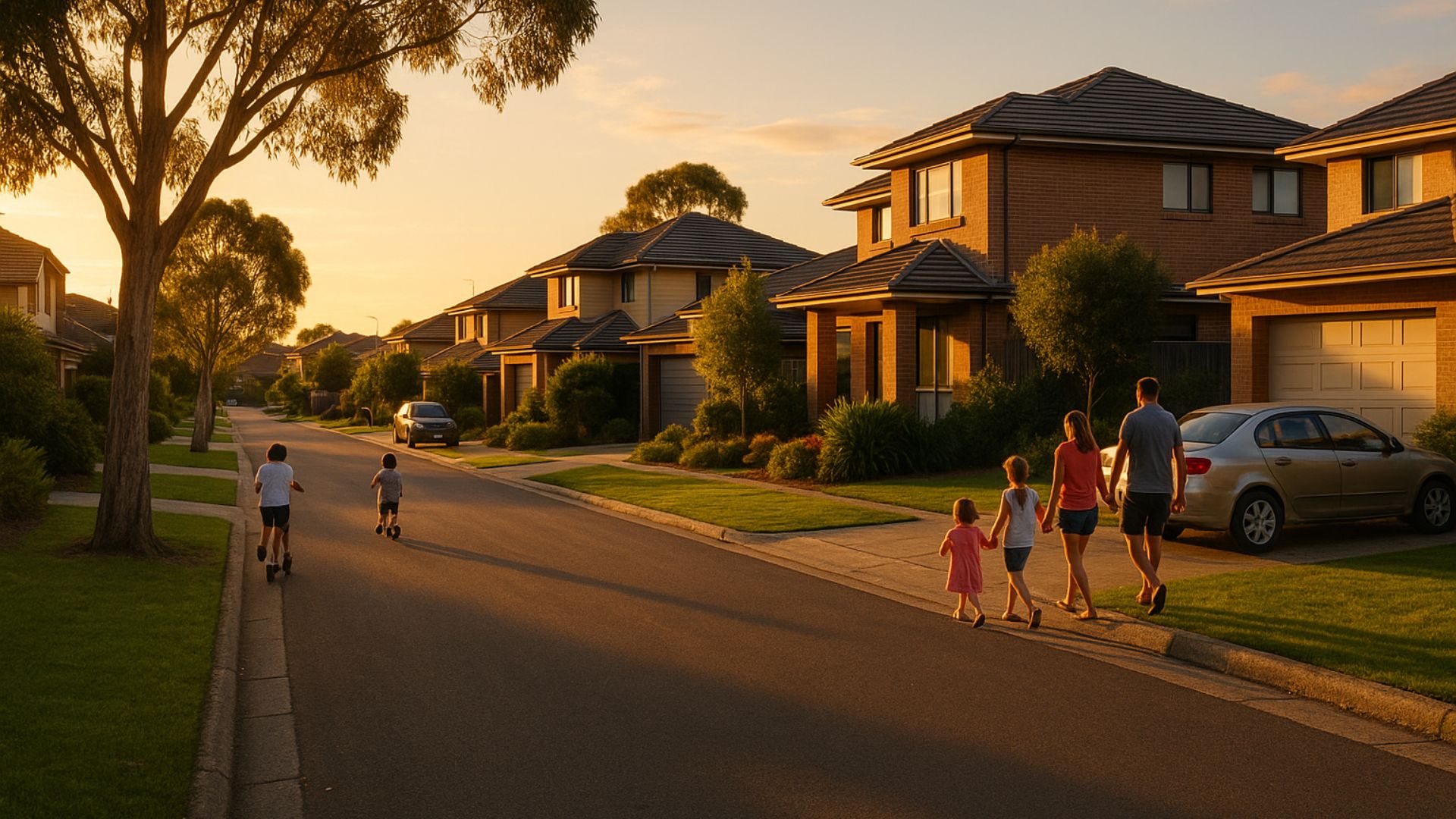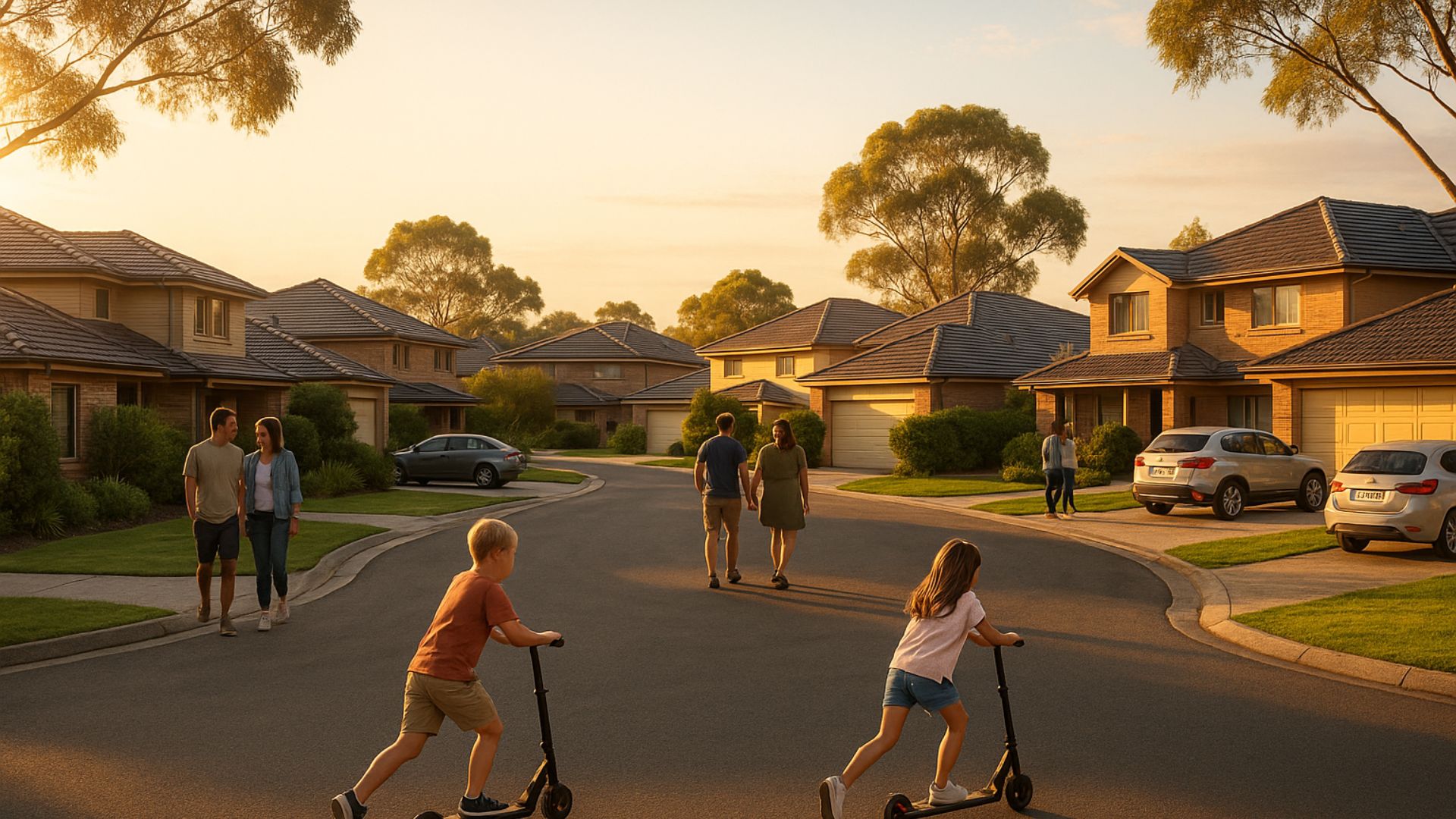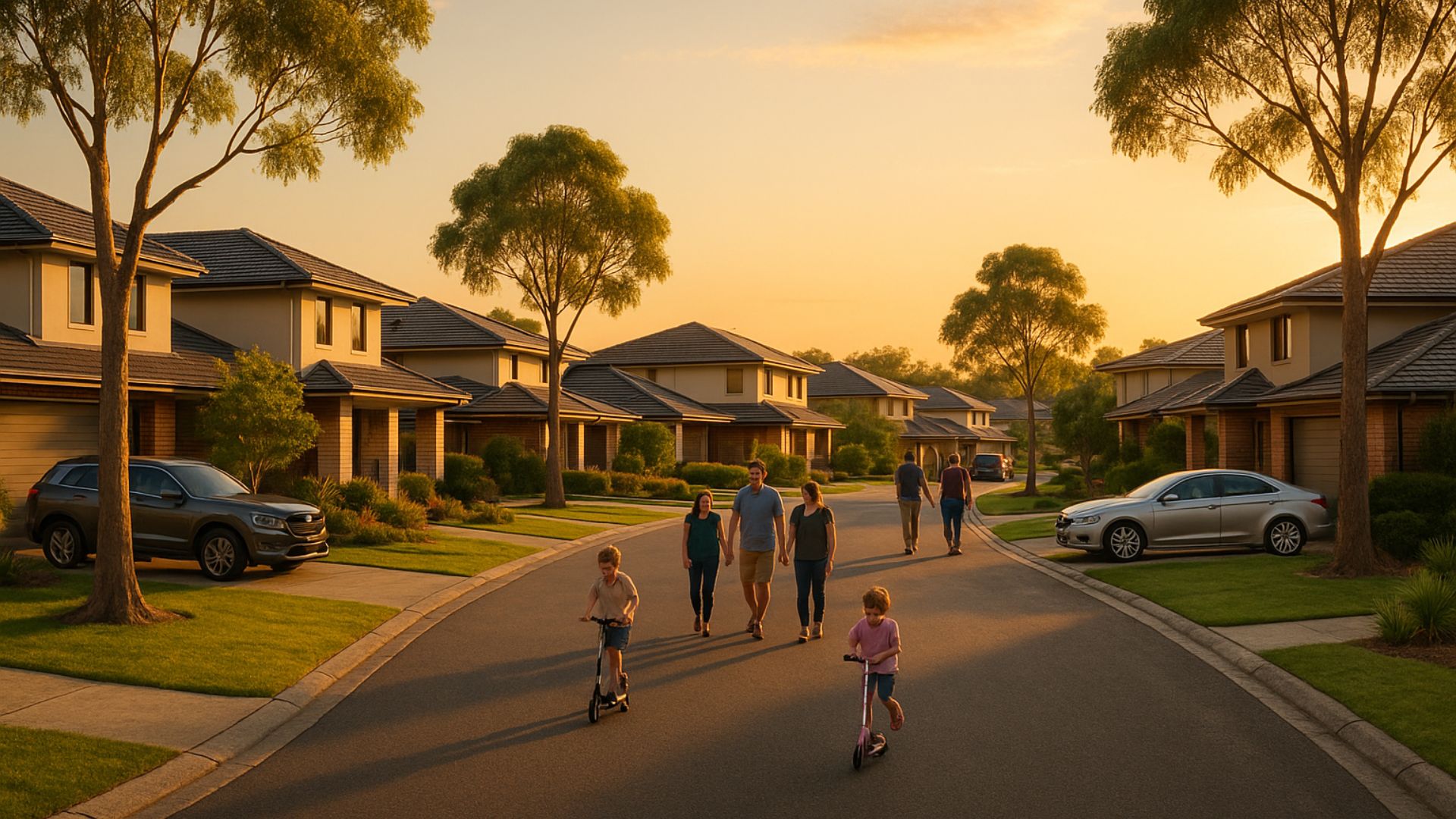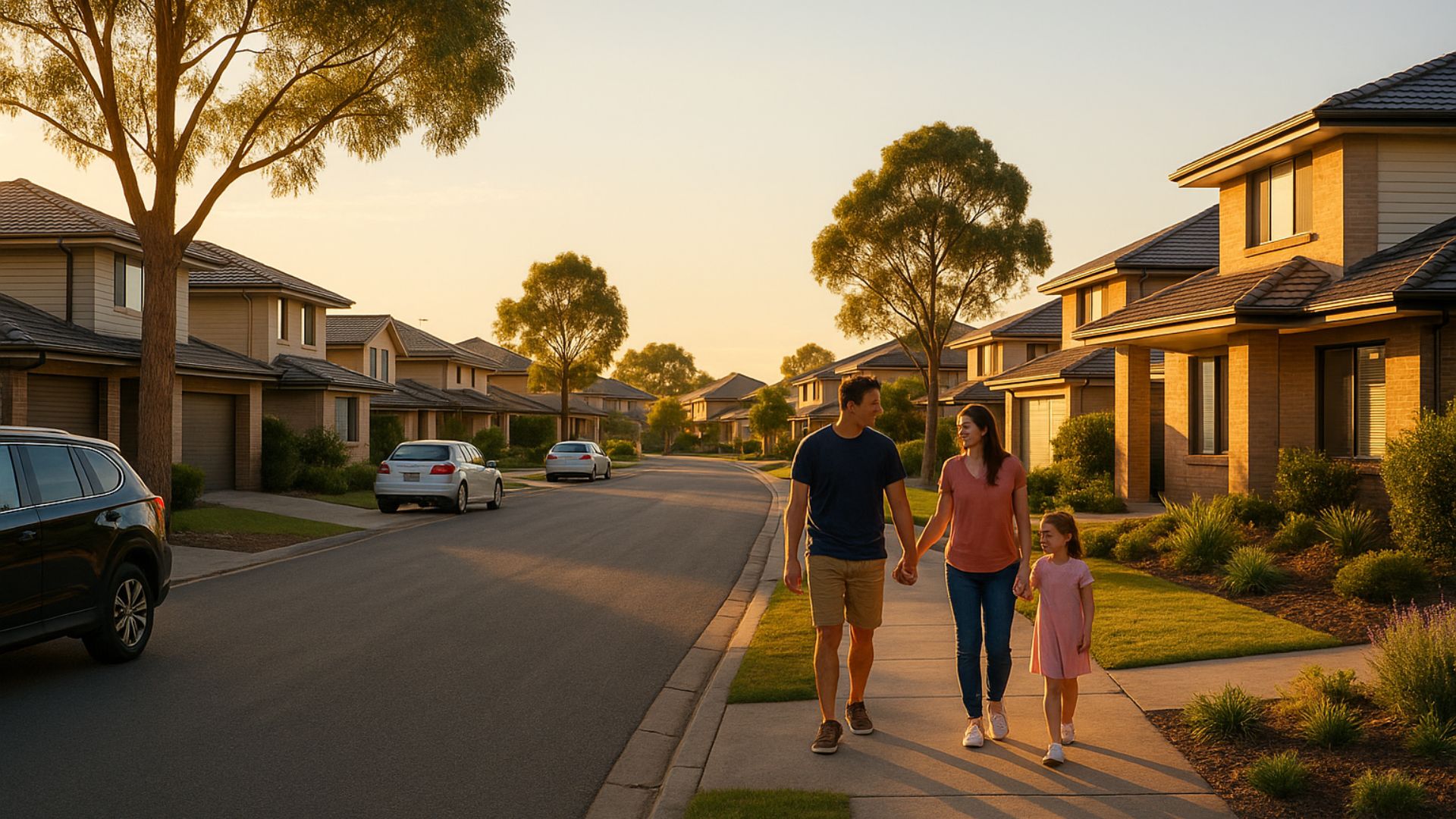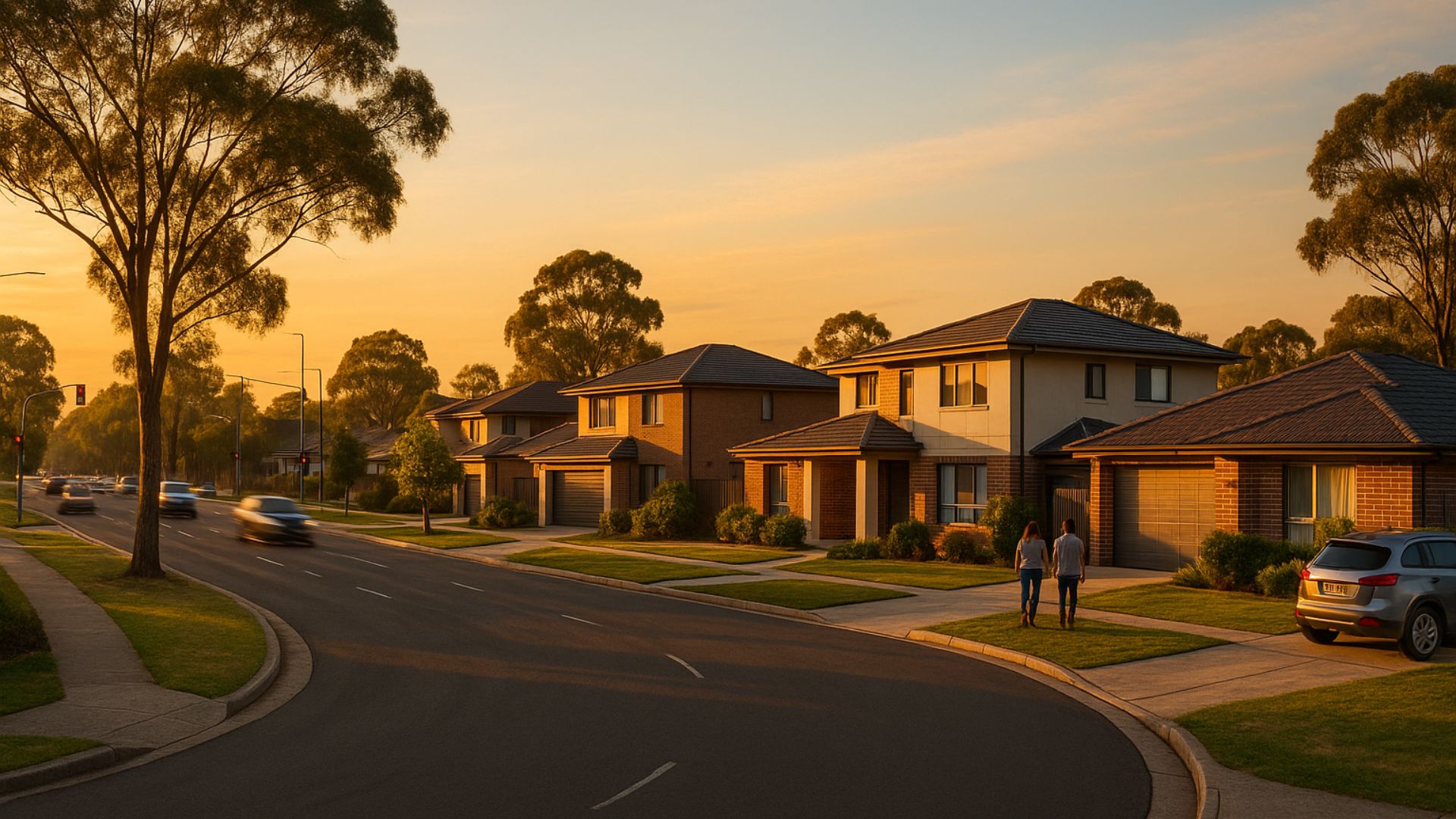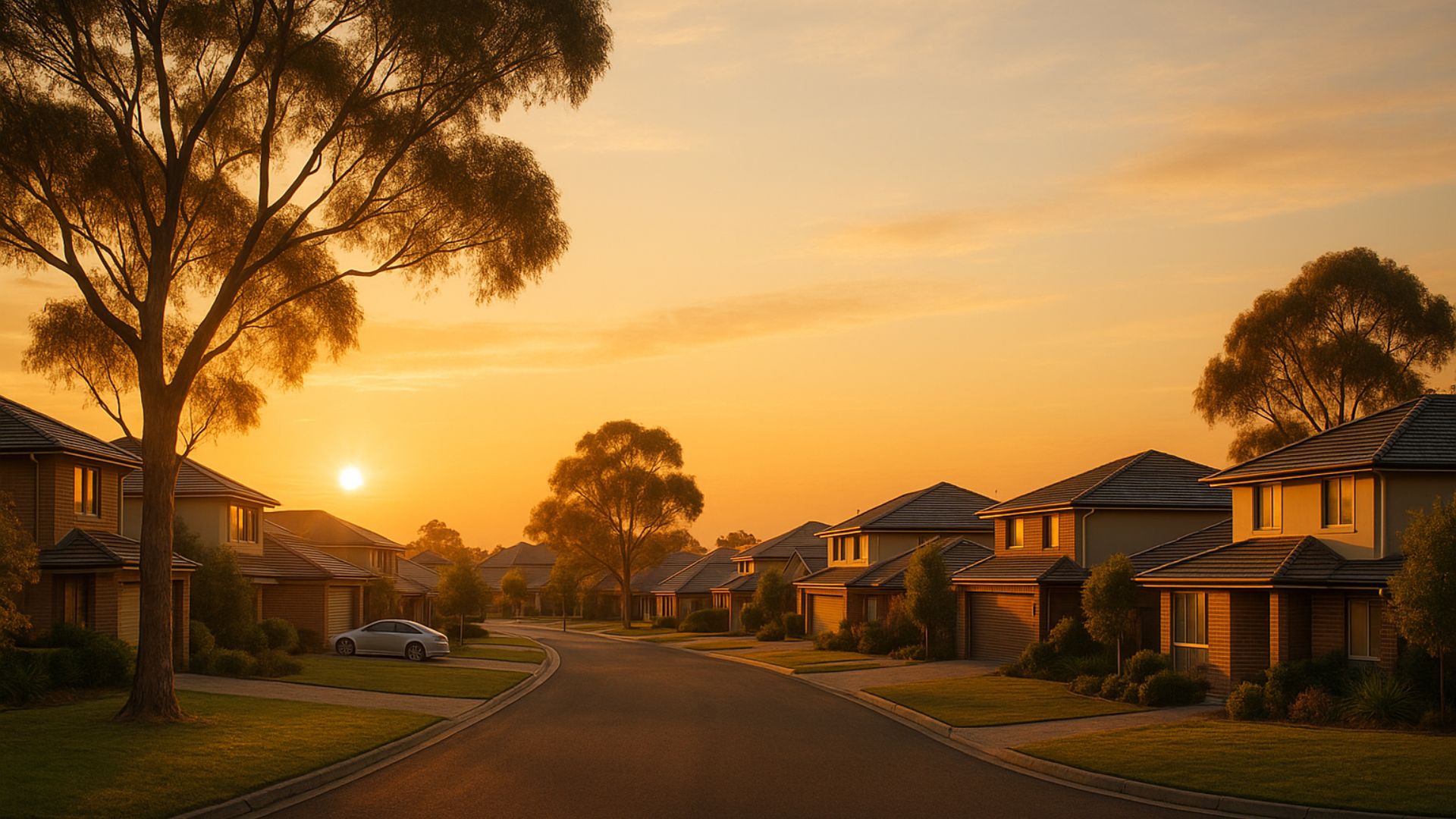When it comes to property investing in Australia, we tend to mainly focus on the big picture — suburb selection, proximity to schools, transport links, and infrastructure growth. But there’s another layer to location that can make a surprising difference to your long-term growth, and that is the street itself.
Not all streets are created equal. Two homes in the same suburb, on identical-sized blocks, can differ in price by tens or even hundreds of thousands of dollars, simply because of the street which they sit on. Increasingly, buyers and investors alike are recognising the value of quiet, family-oriented streets and cul-de-sacs, and are willing to pay a premium for the peace, safety, and community lifestyle they offer.
So, what makes these properties so desirable? And why might it be worth paying that extra price tag if you’re an investor?
The Hidden Value in Family-Oriented Streets
Family-oriented streets tend to be quiet, low-traffic pockets where neighbours know each other, kids play safely outside, and there’s a genuine sense of community. It’s the kind of street where bikes are left on lawns, dogs are walked at sunset, and the atmosphere feels welcoming and secure.
For homebuyers, that emotional connection is powerful. For investors, it can translate to demand, stability, and price protection.
These streets often attract long-term owner-occupiers and tenants who care for their homes, creating a well-maintained environment that enhances the entire neighbourhood’s appeal. Over time, this helps underpin property values and reduce volatility, making these pockets more resilient through property cycles.
Put simply: investors who target streets with a strong sense of family and community are investing in more than just a property — they’re investing in a desirable lifestyle that will always have demand.
Why Cul-de-Sacs Are Particularly Sought After
Among all street types, cul-de-sacs hold a special place in the Australian property market. They offer a combination of safety, privacy, and community connection that few other street layouts can match.
Because they’re closed to through-traffic, cul-de-sacs naturally limit vehicle flow. That means less noise, fewer strangers, and a safer environment for children and pets. For many families, that peace of mind is invaluable.
Cul-de-sacs also tend to foster strong neighbourhood bonds. With only a handful of houses sharing the same loop or turning circle, residents often get to know one another, creating a mini-community within the larger suburb. Think street barbecues, kids’ playdates, and a sense of shared responsibility for keeping the area clean and safe.
From an investor’s perspective, these micro-communities are gold. Homes in cul-de-sacs are typically tightly held and rarely come to market — and when they do, they sell quickly, often with a premium compared to similar homes on busier through-streets.
How Much More Are Buyers Willing To Pay?
While it varies between markets, research and sales data consistently show that homes in cul-de-sacs or quiet, family-friendly streets can attract premiums of 5% to 20% over comparable properties nearby. In tightly held or highly desirable suburbs, that difference can be even higher.
That’s a meaningful margin, and one that reflects both tangible and emotional value. The tangible side includes safety, quietness, and street aesthetics, while the emotional side comes from the lifestyle benefits and sense of security that families crave.
For investors, that emotional value is key. Properties that connect emotionally with buyers tend to sell faster, at higher prices, and are less affected by economic fluctuations — because people don’t make these buying decisions based purely on numbers. If you’re holding on to the property, you’re likely to attract higher rents which results in better cash flow and yield for your portfolio.
But When You’re Investing, Why Would Paying a Premium Make Financial Sense?
At first glance, it might seem counterintuitive for investors to pay more upfront for a “lifestyle premium” location. After all, investment decisions are supposed to be rational and profit-driven. But when you look at the long-term fundamentals, that extra spend can be a strategic move.
Properties in quieter, family-focused streets tend to attract more stable, long-term tenants. Families value security, community, and continuity — so they’re less likely to move frequently. This means fewer vacancies, less turnover, and a more reliable income stream for landlords.
From a capital growth perspective, these streets also perform well because of limited supply. Cul-de-sacs and secluded family pockets make up only a small percentage of residential layouts in most suburbs, meaning demand often exceeds availability. Over time, this imbalance supports stronger price growth.
Additionally, family buyers — who often become the end purchasers of investment properties — are typically emotionally driven buyers. They’re willing to stretch their budget to secure the right home in the right street. This creates upward price pressure, which benefits investors holding property in these premium locations.
The “Micro-Location” Factor. Having a Street Strategy.
Many investors spend months analysing suburb-level data such as vacancy rates, median prices, and rental yields, but even after extensive research, the actual street factors can be overlooked. Yet, it’s often this micro-location detail that determines whether the property outshines the market average.
A property might be in a great suburb but lose value potential if it’s on a busy road, next to a commercial site, or opposite a noisy intersection. Conversely, a similar home tucked away in a quiet cul-de-sac can attract stronger buyer interest and long-term appreciation.
Understanding this street-level nuance gives investors an edge. When analysing a potential purchase, it’s worth physically visiting the area to assess traffic flow, noise levels, and neighbourhood atmosphere, which are things that you can’t always see in data or photos.
Long-Term Outlook
As Australian cities grow denser and higher-density housing becomes more common, the appeal of quiet, family-friendly streets is likely to strengthen, not fade.
Scarcity will play a major role. There’s limited scope to create new cul-de-sacs in established suburbs, and infill developments often prioritise efficiency over spacious, low-traffic designs. This means the supply of such streets will remain constrained, while demand continues to rise among families seeking refuge from urban noise and congestion.
For investors, this scarcity dynamic provides both protection and opportunity. Over the long term, properties in these sought-after enclaves are likely to deliver superior capital growth and attract strong buyer competition when it’s time to sell.
For property investors, understanding why certain locations outperform is the key to long-term success. A family-oriented street or cul-de-sac isn’t just a lifestyle choice — it’s a value driver.
Yes, these homes may cost more upfront. But they also tend to:
- Hold their value through market fluctuations.
- Attract long-term, quality tenants.
- Achieve higher resale prices due to emotional appeal.
- Benefit from scarcity-driven capital growth over time.
In property investing, paying a premium can sometimes be the smartest play — provided it’s for the right reason. And when that reason is peace, safety, and enduring desirability, it’s hard to argue against the investment case for a quiet, family-friendly street.
****
Thank you for reading our blog on Australia’s Post-Election Property Market. Make sure you head over to our YouTube channel by clicking here to discover more educational insights to level up your property investing including our latest video: Australian Property Market 2025 Forecast.
Disclaimer:
Aus Property Professionals Pty Ltd retains the copyright in relation to all the information contained on its website and in this guide. This guide, and any content provided in addition, or linked to resources, is general information only and not investment advice. As everyone’s individual situation is different, we advise individuals to always seek advice from relevant professionals such as legal, financial, accounting, and investing experts.
The intention of this guide is to be used for general information purposes only, in addition to your personal research and due diligence. We do not take any responsibility for any actions taken as a result of this guide as any actions should always be taken with consultation with relevant professionals who take individual circumstances to account.
Past performance doesn’t guarantee future results.
We have compiled the information contained in this guide from online resources, our research, and consultations, and we cannot guarantee the complete accuracy of this information, and we will always reference the resources where the data and information was derived.

